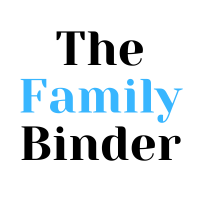Does your living space feel like a never-ending puzzle in today’s fast-paced world? Many people struggle to keep their homes organized as life gets busier, leading to more stress and less free time.
Imagine the calm of a clutter-free home: less anxiety, more productivity, and extra moments for what matters most. With new trends and smart tools emerging in 2025, finding help organizing home has never been easier or more effective.
This essential, step-by-step guide is here to walk you through the latest strategies, expert insights, and practical tools for organizing every room and aspect of your home. Ready to transform your space? We’ll cover mindset and planning, decluttering, room-by-room tactics, digital organization, simple maintenance routines, and the top tools for 2025.
The Foundation: Mindset and Planning for Home Organization Success
Getting the right mindset is the first step if you want real help organizing home. Many people wonder why clutter piles up, but the answer is often emotional. Studies show that a messy space can raise stress and anxiety, affecting how you feel every day. Sometimes, items hold memories or represent unfinished goals, making them hard to let go. Professional organizers suggest shifting your thinking—view your home as a place for living, not just storing things. When you recognize the emotional side of clutter, you can take control and move forward.
Understanding the Psychology of Clutter
Why do we keep things we no longer need? Emotional attachments and fear of loss play a big part. Research reveals that clutter can trigger anxiety and even lower your mood. Cluttered spaces often reflect mental overload. For many, items carry sentimental value or represent missed opportunities. Recognizing these patterns is essential if you're looking for help organizing home. Shifting your mindset from guilt or fear to one of empowerment lets you start making positive changes.
Setting Realistic Goals and Priorities
To get real help organizing home, start by setting clear, realistic goals. Not every room needs a complete overhaul at once. Use the SMART framework—specific, measurable, achievable, relevant, and time-bound—to break goals into manageable steps. For example, a short-term goal might be clearing the entryway, while a long-term goal could be a full closet refresh. Prioritize spaces that impact your daily life the most. According to recent data, 72% of organized homeowners say their days run more smoothly after setting such priorities.
Creating a Personalized Organization Plan
Every household is unique, so your plan should reflect your needs. Begin by assessing your current situation and make a list of problem zones. Break the process into small tasks with a realistic timeline. Use planning tools like checklists, digital planners, or even simple apps. Weekly or monthly organization schedules can turn big projects into bite-sized tasks. Involve your family or housemates, as shared responsibility makes it easier to get help organizing home. This approach ensures everyone is on board and motivated to keep things tidy.
Overcoming Common Barriers and Procrastination
It’s normal to hit roadblocks when you seek help organizing home. Common barriers include lack of time, low motivation, or feeling overwhelmed by where to start. To beat decision fatigue, focus on one small area at a time and celebrate progress. Maintaining momentum is easier with routines and reminders. For example, one family tackled their garage in 15-minute bursts, transforming chaos into order over several weeks. Studies show 60% of people cite “not knowing where to start” as the main barrier, so just taking that first step can make a huge difference.
Leveraging Professional Resources and Community Support
You don’t have to do it all alone—there are resources available to help organizing home. Consulting a professional organizer or joining online communities can provide motivation and accountability. Social media groups, local workshops, and online challenges connect you with others on the same journey. For more practical tips and inspiration, explore Organize your home for actionable solutions. Using the right tools and systems makes the process smoother and more enjoyable. Remember, support is out there, and it can turn an overwhelming task into an achievable goal.
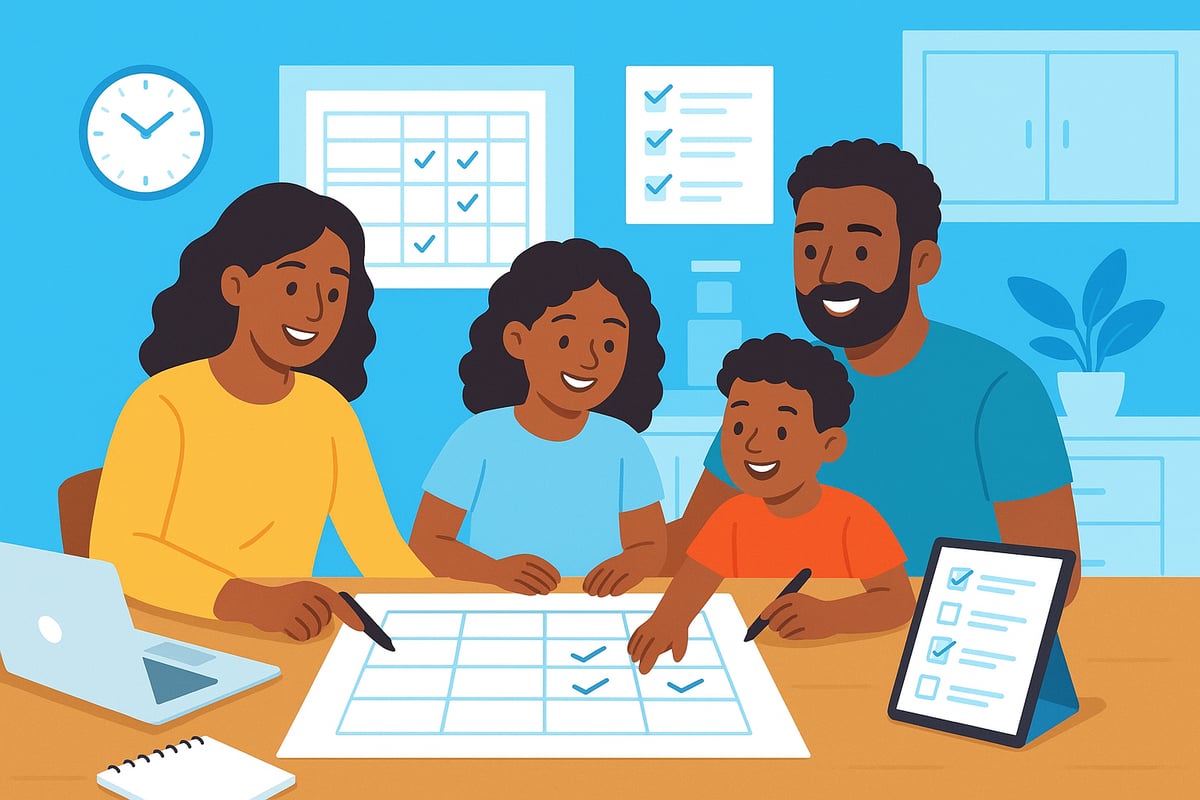
Step 1: Decluttering for a Fresh Start
Feeling overwhelmed by clutter is a common reason people seek help organizing home. The secret to lasting change? Start small, stay consistent, and follow a clear process. Whether you live in a cozy apartment or a busy family house, decluttering is the essential first step to reclaiming your space.
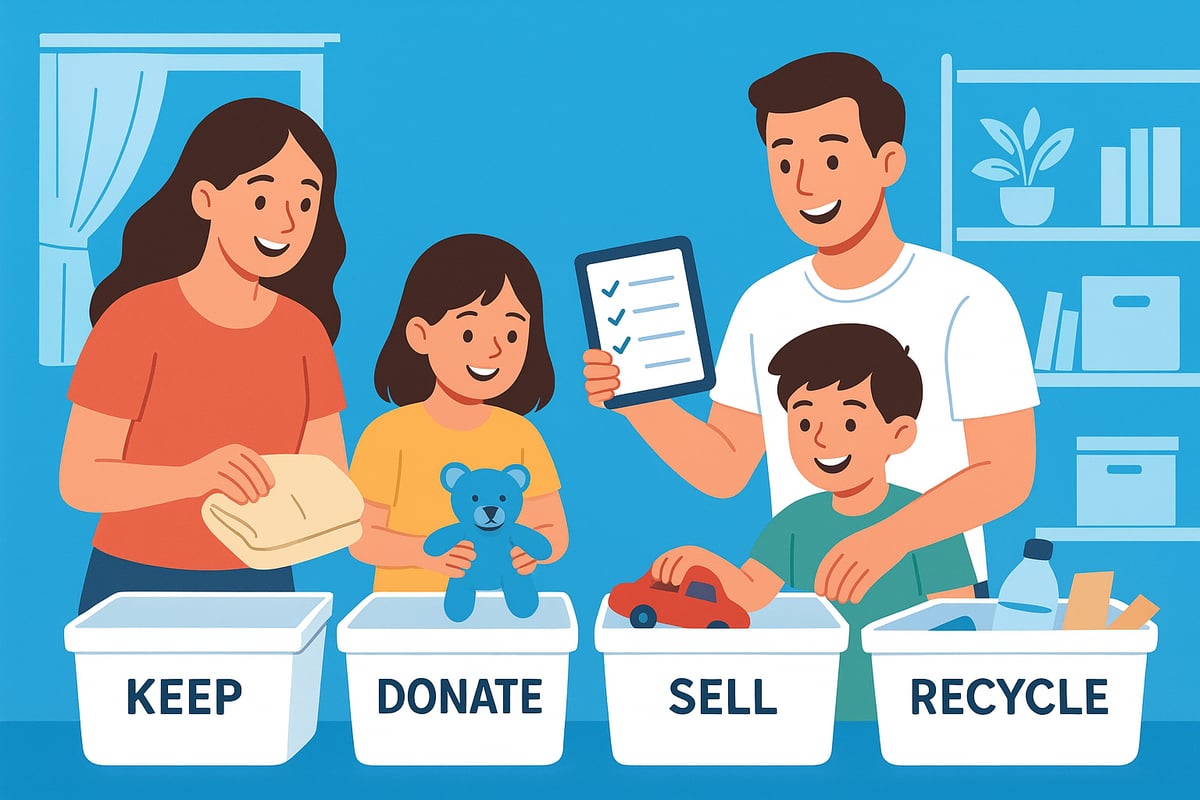
The Decluttering Process: A Chronological Guide
Decluttering is a journey that starts with small, manageable steps. Begin by identifying one area that needs attention, such as a kitchen drawer or a closet shelf. Assess what you have, then sort your belongings. Purge the items you no longer use, and organize what remains in a way that feels right for your lifestyle.
Many people find help organizing home by setting a timer for 15-minute declutter sessions. This makes the process less intimidating and helps build momentum. Remember, every small action adds up to big results.
Sorting Strategies: Keep, Donate, Sell, Recycle
Effective sorting is at the heart of any effort to help organizing home. Use the popular Four-Box Method: label boxes as keep, donate, sell, and trash. This approach makes decisions easier and streamlines the process.
Ask yourself: Do I use this? Does it bring value? If not, let it go. Surprisingly, 50% of Americans have unused items worth over $1,000 just sitting in their homes. For more guidance, see Decluttering your home with a household organization binder for practical tips and checklists.
Handling Sentimental and High-Value Items
Memories are important, but they can make it tough to get help organizing home. Sentimental items often carry deep emotional weight. To keep memories without clutter, try digitizing photos or creating a small memory box for treasured keepsakes.
If an item is valuable but no longer serves you, consider selling or gifting it. This way, cherished belongings find a new purpose while you free up space for what matters most.
Eco-Friendly Decluttering in 2025
Sustainability is a growing focus for anyone seeking help organizing home. Instead of tossing unwanted items, explore eco-friendly options. Donate gently used goods to local charities, recycle electronics and plastics responsibly, and look for specialized eco-services.
There has been a 30% increase in eco-friendly decluttering services since 2022, making it easier than ever to dispose of items in a way that benefits both your home and the planet.
Tackling Common Problem Areas
Certain spots almost always need help organizing home, like closets, garages, kitchens, and kids’ rooms. Start with high-clutter zones and use room-specific checklists to stay on track. For example, a closet overhaul might mean sorting clothes by season, while a kitchen refresh could focus on expired pantry items.
Before-and-after snapshots are motivating. Seeing progress in one area often inspires you to tackle the next, turning decluttering into a rewarding routine.
Maintaining Decluttered Spaces
Once you’ve cleared the clutter, build habits that keep your home organized. Set monthly or seasonal reminders to review and tidy up key areas. Small daily routines, like putting things back in their place, prevent mess from piling up.
Use tools such as calendar alerts or join declutter challenges with friends or family. Maintenance is easier than starting over, and these habits ensure your hard work lasts.
Digital Decluttering: A Modern Necessity
Physical clutter is only part of the equation when you want help organizing home. Digital spaces—like files, photos, and emails—can become just as overwhelming. Organize digital documents with clear folders and naming systems. Set aside time each month for an “inbox zero” session.
Reducing digital overload boosts productivity and brings a refreshing sense of order to your daily life, making your home feel lighter and more manageable.
Step 2: Room-by-Room Organization Strategies for 2025
If you want real help organizing home spaces, start by tackling each room individually. In 2025, the latest strategies combine smart storage, tailored systems, and sustainable choices. Let’s break down practical tips for every area, so you can transform cluttered rooms into calm, functional spaces.
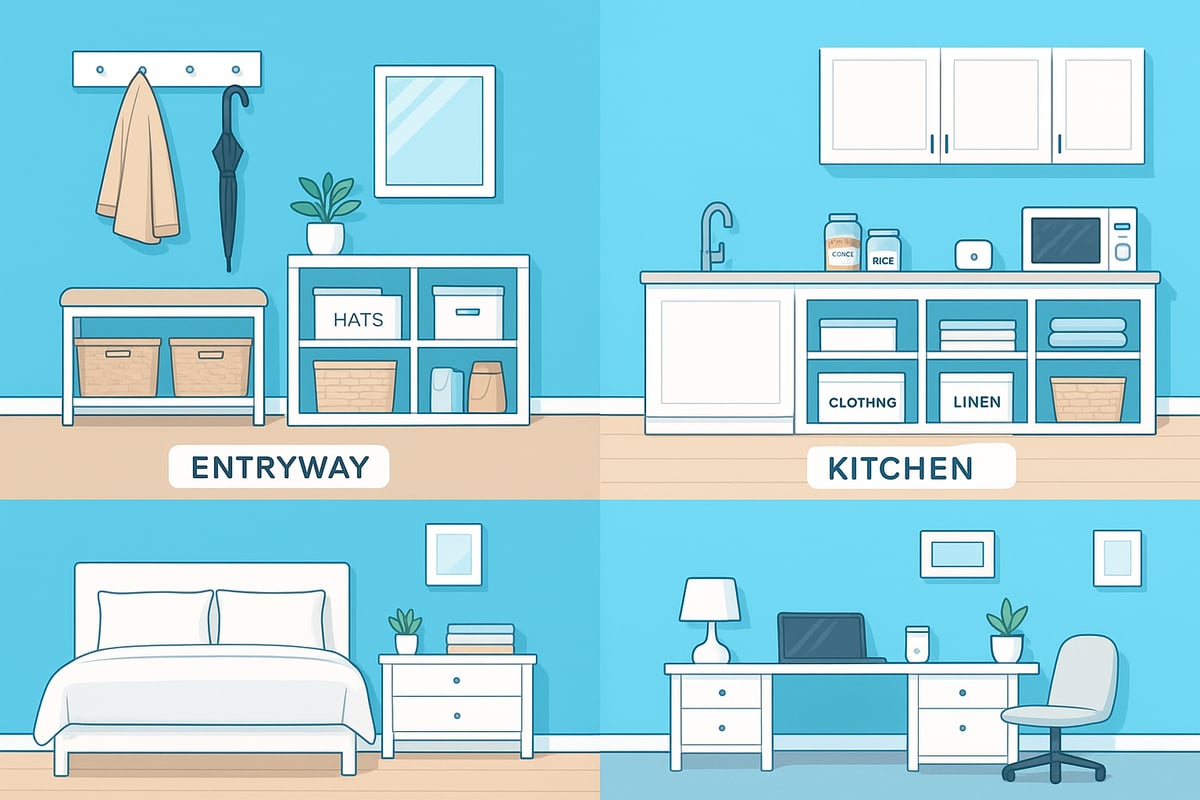
Entryway and Living Spaces
The entryway sets the tone for your home. Help organizing home starts here with practical storage. Use shoe racks, wall hooks, and mail organizers to keep necessities at hand and clutter off surfaces. Multifunctional benches with hidden storage provide seating and space for bags or shoes.
Maximize vertical space with floating shelves or cubbies for keys and small items. According to recent data, 67 percent of clutter builds up near entryways, so regular checks are vital. In the living room, opt for furniture with built-in storage, like ottomans or coffee tables with drawers.
Try a quick routine: place a basket by the door for items that need to go out, and empty it daily. This habit ensures entry and living spaces stay clear and welcoming.
Kitchen and Pantry Organization
A well-organized kitchen makes meal prep a breeze and helps reduce stress. Zoning is key: group items by use, such as baking, snacks, or breakfast, and store them in labeled containers. Use transparent bins in the fridge and pantry, so you always see what you have.
Drawer dividers keep utensils sorted, while lazy Susans make spices and condiments easy to reach. Studies show that organized kitchens can cut food waste by 20 percent, so help organizing home by setting up a weekly fridge check.
Label shelves and containers for everyone in the household. This way, groceries get put away in the right spot, and everyone can find what they need quickly.
Bedroom and Closet Optimization
Bedrooms should be restful, and that starts with a tidy closet. Closet systems with modular shelving, under-bed storage, and seasonal rotation are essential for help organizing home efficiently. Try the capsule wardrobe approach—keep only what you love and wear often.
Did you know 80 percent of people only wear 20 percent of their wardrobe? Use this fact to guide your decluttering. Store off-season clothes in bins under the bed or on high shelves.
Use drawer organizers for socks, accessories, and linens. Regularly review your closet and donate or sell items you no longer need, keeping your space fresh and functional.
Bathroom and Laundry Room Solutions
Small spaces like bathrooms and laundry rooms benefit from vertical storage. Wall-mounted shelves, over-the-door racks, and rolling carts help organizing home essentials without taking up floor space. Store toiletries in clear bins or drawer dividers to see what you have at a glance.
Keep cleaning supplies in a caddy for easy transport. Organized bathrooms can reduce morning stress, as everything has its place. In the laundry room, use labeled baskets for sorting clothes and shelves for detergents.
Create a simple routine: wipe surfaces daily, restock toiletries weekly, and check laundry supplies monthly. These habits keep these high-use areas running smoothly.
Kids’ Rooms and Play Areas
For families, help organizing home means making kids’ spaces functional and fun. Use color-coded bins for toys, books, and art supplies. Low shelves and labeled containers encourage children to put things away themselves.
Involve kids in the process—let them choose labels or decorate storage bins. Implement a toy rotation system: keep some toys out and store the rest, swapping them every few weeks to keep playtime fresh.
Studies show that organized play spaces can boost focus and creativity. Regularly declutter with your child, donating unused toys to teach generosity and responsibility.
Home Office and Paperwork Management
A tidy home office is crucial for productivity, especially with more people working remotely. Start by assigning a place for everything: use filing cabinets or desktop organizers for papers, and digital folders for electronic files.
Help organizing home offices by choosing ergonomic furniture and minimizing desktop clutter. Decide between digital and physical filing—scanning important documents can save space and reduce paper piles.
According to research, 60 percent of remote workers feel more productive in organized spaces. Schedule weekly “paper sort” sessions to keep paperwork manageable and maintain a focused workspace.
Garage, Basement, and Storage Spaces
Garages and basements often become dumping grounds, but they offer prime real estate for storage. Install heavy-duty shelving along walls and use clear, labeled bins to store seasonal items and tools.
Pegboards are perfect for organizing tools and sports equipment, making everything easy to find. Rotate seasonal items twice a year and label bins for quick access. Organized garages not only increase home value but also reduce safety risks.
Explore the latest 2025 Home Organizing Trends for inspiration on modular storage and smart solutions that make these spaces more efficient. This approach ensures help organizing home is effective and future-ready.
Step 3: Digital Organization and Document Management
In 2025, digital clutter can be just as overwhelming as physical mess. Mastering digital organization is a vital part of any plan to help organizing home. By tackling your digital files, passwords, and important documents, you can reduce stress, improve efficiency, and ensure your family is prepared for anything.
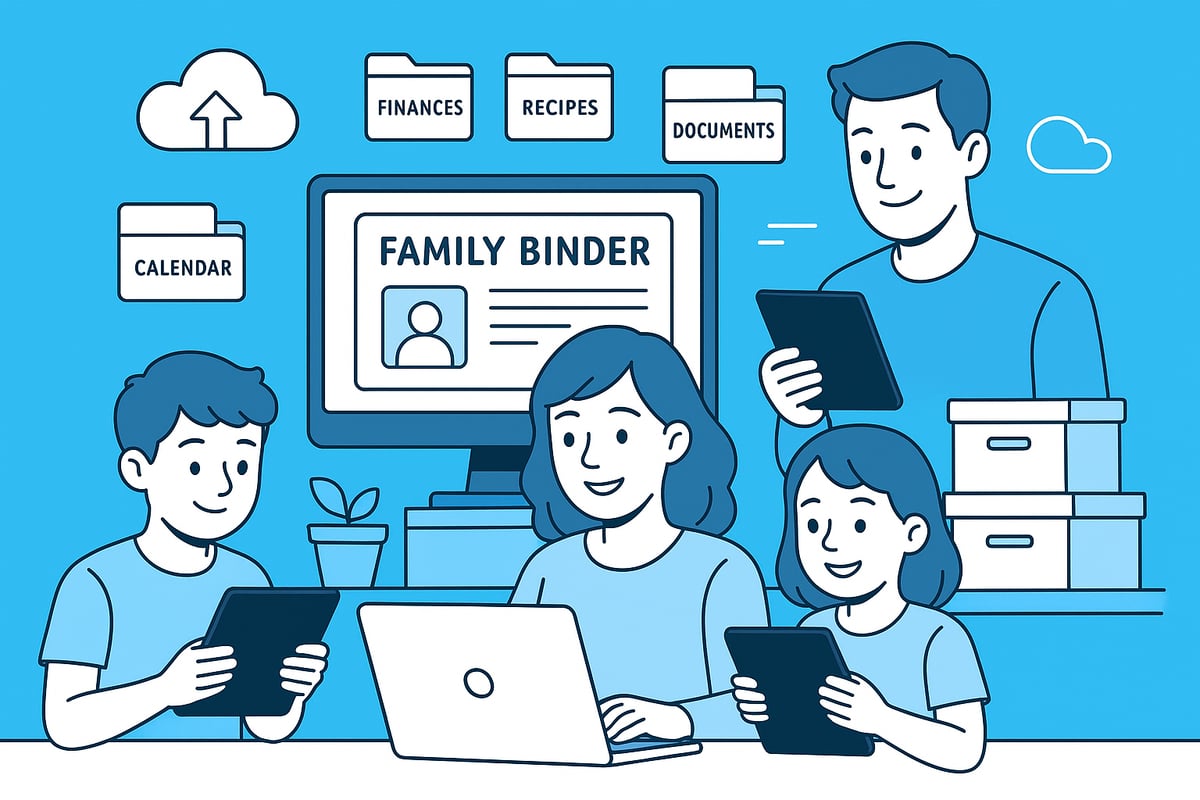
Organizing Digital Files and Photos
A cluttered computer can slow you down and add to daily stress. Start by creating a simple folder structure for documents and photos. Use clear naming conventions, such as 2025_Taxes or Vacation_Photos_Florida, to make retrieval easy.
- Schedule a monthly digital clean-up session.
- Back up files to a cloud service for safety.
- Regularly delete duplicates and outdated documents.
Here is a sample folder structure:
Home_Organization/
Finances/
Photos/
Kids_School/
Household_Receipts/
Taking these steps will help organizing home and keep your digital life streamlined.
Managing Passwords and Online Accounts
Password chaos is a common headache. Secure password management is essential to help organizing home, especially with more devices and accounts in every household.
- Use a trusted password manager to store and generate complex passwords.
- Enable two-factor authentication for sensitive accounts.
- Create a digital "master list" for family members to access in emergencies.
Regularly updating passwords and reviewing online accounts prevents security risks. Staying organized digitally protects your home and personal information.
Streamlining Household Information and Contacts
Centralizing vital details saves time and reduces stress during emergencies. Keep all emergency contacts, medical info, and service provider details in one accessible location, whether digital or physical.
- Use shared family calendars and contact apps.
- Maintain both digital and paper address books for backup.
- Store copies of important documents in a secure cloud folder.
These steps not only help organizing home but also make daily life smoother for everyone in the household.
Essential Tools for Document Management
Modern tools make it easier than ever to manage household paperwork and records. Digital scanners, organization apps, and cloud services allow you to store everything from warranties to insurance policies in one place.
- Create a household binder, either physical or digital.
- Use templates for tracking expenses and important dates.
- Set calendar reminders for document renewals.
For a deeper dive, check out The ultimate guide to organizing your home information for more tips and templates.
The Family Binder: A Comprehensive Home Organization Solution
The Family Binder is a fillable, printable PDF that brings all your critical home and family information together. It helps organizing home by centralizing financial accounts, insurance, household details, and digital logins in one secure document.
Benefits include:
- Easy access for loved ones and caregivers
- Emergency preparedness
- Peace of mind for estate planning
Families with children, retirees, and caregivers find it invaluable for keeping everything organized. Its editable format, instant download, and lifetime use make it a smart addition to any digital organization toolkit.
Step 4: Creating and Maintaining Home Organization Routines
Keeping your home organized is not a one-time project, but an ongoing journey. The real secret to lasting success is building routines that fit your lifestyle. If you want real help organizing home systems, it’s all about turning smart habits into second nature.
Establishing Daily, Weekly, and Seasonal Habits
Consistency is your best friend when it comes to routines. Start with small actions, like making your bed or clearing counters every morning. Weekly habits might include deep-cleaning one room or sorting mail. Seasonal routines, such as a spring closet refresh or a pre-holiday pantry check, help organizing home efforts stay on track all year.
A home management binder can simplify these routines by keeping schedules, checklists, and reminders in one place. For more tips, check out how to stay organized with a home management binder. These tools can give you the structure you need.
Family Involvement and Delegation
You don’t have to do it all alone. Involve your whole family or housemates in routines. Assign age-appropriate chores to kids and rotate responsibilities for shared spaces. This not only helps organizing home routines run smoothly, but it also teaches teamwork.
Try using colorful chore charts or a shared digital calendar. Regular family meetings can be a great time to check in, celebrate progress, and shuffle tasks if needed.
Using Technology to Stay Organized
Embrace tech to make life easier. Home organization apps can schedule reminders, track tasks, and even automate grocery lists. Smart speakers and digital assistants let you set voice reminders for cleaning or maintenance.
Many families find that syncing calendars or using shared to-do lists is a game changer. These tech tools help organizing home routines become more efficient and less stressful.
Tackling Setbacks and Staying Motivated
Everyone faces setbacks. Maybe you skip a week, or clutter sneaks back in. The key is not to give up. Set realistic goals, celebrate small wins, and use visual trackers to stay motivated.
If you feel stuck, try rewarding yourself or the family when you hit a milestone. Remember, every step counts when you seek help organizing home systems.
Refreshing and Updating Systems as Life Changes
Life is always changing, and so should your routines. New family members, moving to a new place, or shifting work schedules all require an update. Review your organization systems regularly and adjust as needed.
An annual “organization audit” can help organizing home routines stay current. Use this time to clear out old systems and introduce new ones that fit your evolving needs.
Preventing Clutter Relapse
Staying organized is about catching problems early. Watch for warning signs like piles forming or missed chores. Quick “reset” days can get you back on track fast.
Most people who get help organizing home routines and stick with them use regular check-ins to maintain order. Professional organizers suggest building in reset days and using accountability tools to keep your momentum.
Step 5: Essential Tools, Products, and Trends for Home Organization in 2025
Staying ahead with the right tools and insights is crucial if you want real help organizing home spaces. In 2025, innovation, sustainability, and smart technology are transforming how we keep our homes tidy. From must-have containers to digital assistants, these solutions make organizing easier and more effective than ever.
Must-Have Organization Tools and Products
Choosing the right products can make all the difference when you need help organizing home areas. In 2025, modular storage bins, stackable baskets, and adjustable shelving remain top picks for maximizing space. Stackable containers help maximize vertical storage, while space-saving hangers keep closets streamlined.
Popular products include:
- Clear, stackable bins for easy visibility
- Drawer organizers for utensils and office supplies
- Over-the-door hooks for bathrooms and bedrooms
- Modular shelving units that adapt as needs change
According to recent data, modular storage solutions grew by 25 percent in popularity last year. Investing in versatile tools ensures your organizing systems can evolve with your lifestyle.
Smart Home Organization Gadgets
Tech lovers seeking help organizing home routines are turning to smart gadgets for efficiency. The latest devices include voice-activated reminders, app-connected inventory trackers, and digital labels. These tools simplify everything from chore scheduling to monitoring pantry items.
Smart gadgets to consider:
- Voice assistants for setting cleaning reminders
- Smart labels that sync with inventory apps
- Automated lighting for storage spaces
Smart devices not only save time but also help maintain order with minimal effort. Insights show that smart gadgets are boosting organization efficiency in homes across the country.
Sustainable and Eco-Friendly Organization Solutions
Eco-conscious households can now get help organizing home spaces with products that prioritize sustainability. Many organizers are made from recycled or renewable materials, like bamboo drawer inserts or compostable storage bins. There is growing demand for these solutions, with 40 percent of consumers preferring eco-friendly options.
Eco-friendly favorites:
- Bamboo or recycled plastic organizers
- Compostable bins for kitchen waste
- Reusable cloth baskets
For more on sustainable practices and the latest green trends, check out the Organizing Trends 2025 guide, which highlights eco-friendly materials and practices in home organization.
Digital Tools and Apps for 2025
Digital solutions offer powerful help organizing home information and schedules. The best apps for 2025 include inventory trackers, document management tools, and AI-powered decluttering assistants. These apps simplify list-making, automate reminders, and centralize important family documents.
Top digital tools:
- Inventory management apps for pantry and storage
- Digital planners for cleaning schedules
- Cloud-based document organizers
A recent study found that 55 percent of households use at least one organization app, making digital management a must-have for modern homes.
Trends Shaping Home Organization in 2025
Emerging trends are redefining help organizing home routines. Minimalism, multi-functional spaces, and hybrid work zones are more popular than ever. Social media and online communities inspire new ideas, while virtual workshops and organization influencers drive motivation.
For expert insights on what's next, see 5 Home Organizing Trends Experts Want You to Use in 2025, which explores self-care, sustainability, and tech integration as leading trends.
Customizing Tools for Your Unique Needs
Every home is different, so customizing your solutions is key. Assess your space, family size, and routines to select the best products. Tailor your systems for apartments, large homes, or shared living.
Personalization is the secret to making help organizing home strategies stick for the long term.
If you’re ready to take action and finally enjoy the peace of mind that comes with an organized home, remember you don’t have to do it alone We’ve covered how the right mindset and simple routines can transform your space, but having all your important info in one place makes the biggest difference The Family Binder is the tool I trust for keeping everything—from finances to family details—easily accessible and secure It’s simple to use, customizable for your unique needs, and a real time saver for busy families like yours Ready to get started Download Now
